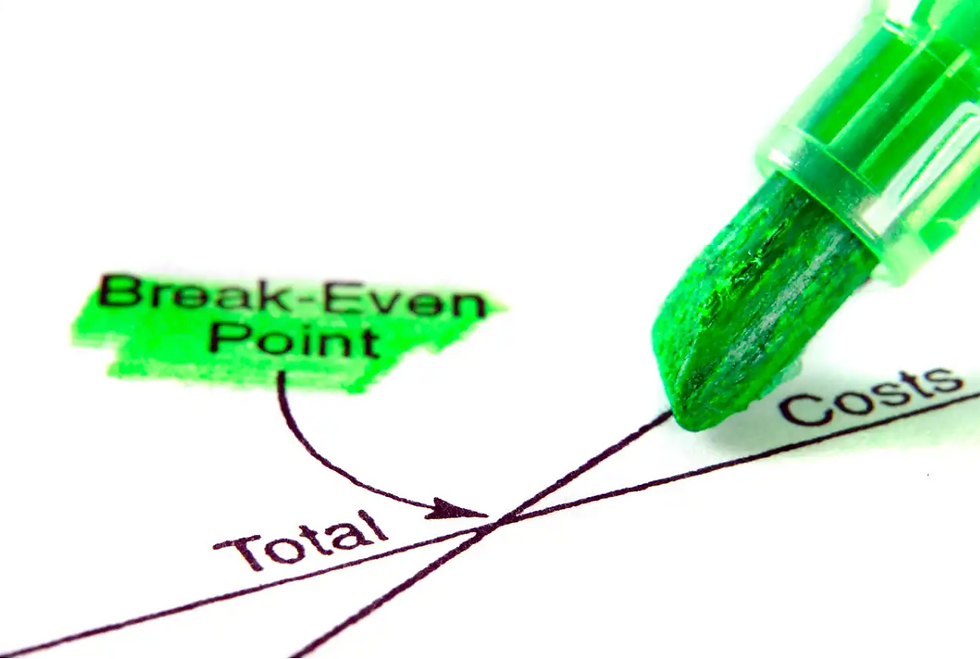Choosing the right project is essential for the successful completion of any construction project. However, the selection of a project can be daunting, especially if you're not familiar with the various methodologies available. This blog provides a step-by-step guide on how to choose the right project based on the selection criteria you have determined. By following this guide, you'll ensure that your project selection process is as effective and efficient as possible.
What is Project Selection?
Project selection is the process of evaluating and choosing projects that align with an organization’s objectives. It can be a daunting task, but with the help of the right tools and methods, the selection process can be streamlined and simplified. An aspect of project selection that is often used synonymously with the term, is prioritization. Prioritization refers to ranking or scoring projects, based on certain criteria, to determine the order of execution.

The first and most important step in choosing a project is to clearly define your company's objectives. Once you know what you want to achieve, it's easy to find the right project and start executing on it!
Why should you focus on improving your project selection process?
Successful project selection is essential for any business. By focusing on the right factors, you'll achieve better results in terms of profitability and efficiency:
1. Better ROI - The ultimate goal of any project is to maximize profits and increase your ROI.
2. Increased efficiencies by identifying areas in your business that need help such as skill shortages
3. An improvement in your strategic alignment with your company's goals.
4. Increased consistency and transparency for all stakeholders by selecting projects with a well defined criteria. One of the upsides of this approach is transparent downstream communication, as project managers gain clarity on why certain projects were approved or rejected.
5. Increased chances of a successful project delivery.
By taking all these factors into account, you'll avoid potential pitfalls and deliver successful projects more consistently and transparently.
First Things First: Perform a Market Analysis
Before bidding on any project, it is important to do a market analysis. This will help you select the right work by examining the profitability of past projects. After all, if it's not profitable, there's no point in pursuing it!

Once you have conducted this analysis, the next step is to assess the competition. This can be done by reviewing bids and project proposals from previous clients or researching online resources. It is also essential to understand what others are doing in order to stay ahead of the curve (or at least keep up with trends).

By doing so, you will be able to identify the right work and determine which projects are the most profitable for your company. You should also assess the competition and make decisions based on that information. This process will help you avoid making mistakes while focusing on projects that are likely to be successful in the long run.
Project Selection Criteria to Consider
Choosing the right project is important, but it can be difficult to know where to start. Before making a decision, take the time to think about the purpose of the project and the criteria that you'll use to make the selection.
Is the project too big or too small for you to complete? Are there any cost or time constraints that you need to take into account? Below I've listed a few things you can consider to use as your selection criteria as a starting point:
What is the payback or break-even point?
When it comes to any project, the payback period is an important calculation that needs to be made. This number tells you how long it will take for your investment (in time and money) to return its value.

If the payoff period isn't favourable - for example, if the project has a high risk of failure or there's a high initial investment required - then it might not be worth pursuing. However, if the potential rewards outweigh these risks, go ahead and invest in whatever project you have in mind! Just make sure you do your calculations first so that you aren't disappointed later on when things don't turn out as planned.
What is the impact to your business's growth?
Projects can have a significant impact on the growth of your business. By carefully considering the time and resources required, assessing potential risks and challenges, as well as the magnitude of work involved, you can ensure that the project is actually feasible. Furthermore, it is essential to think about how the project might affect future work - will it require additional resources or staff? Once all these factors are taken into account, you'll be better equipped to make an informed decision about whether or not to embark on it.
Does the project expand your company's skillset?
When it comes to choosing new projects, companies often struggle with the decision of whether the project is strategic or tactical. A project that is strategic will help your business grow in the future while a project that is tactical may only have short-term benefits. It's important to make sure both the goal of the project and its objectives are clear before starting anything - this will help you measure progress and make informed decisions.
What are the risks involved?
Before starting any project, it is important to understand the risks involved. This will help you make informed decisions about the feasibility of the project and choose the best option for your business.

To start, make sure all members of your team are involved with the selection process - not just those who are assigned to work on it. Make sure you have a good understanding of what needs to be completed, as well as an idea about potential costs and timeframes associated with it. If things don't go according to plan, be prepared to deal with any possible financial implications or losses.
You should also ensure that everyone on your team is up-to-date on the project details so there aren't any surprises later down the line. Learning these things up front can help minimize potential problems down the line.
Do you have sufficient resources such as time, budget, infrastructure, and people with the required expertise?
Before embarking on a project, it is important to assess the time and budget you have available. Depending on the scale of the project, you might need to hire additional workers or purchase special equipment. In some cases, an initial feasibility study might be necessary before moving forward with implementation.
3 Different Project Prioritization Methods

Project prioritization can be a tough task, especially when the number of projects on the to-do list grows. But there is no reason to fret, because the process is easier than you think with the help of a few well-chosen methods. When choosing the right method, consider the number of projects on the list, the complexity of the selection process, and your own resources. Here are three proven methods that can help you in the selection process:
1. Ranking Method
The ranking method is a simple and effective approach that can be used to arrange projects on a scale of importance. For example, you could use a scale from 1-10 to measure the value of each project. Important projects would receive a high ranking, while less important ones would rank lower.
This method can be used in any situation - when starting a new project, when completing an existing project or when making changes to an existing project. The advantage of this method is that it is quick and efficient; there are usually no ambiguities or complexities involved because the selection criteria is limited. However, this method wouldn't work for more complex projects with several different selection criteria.
2. Scoring Model
There is no one perfect model for project evaluation, as the selection of criteria and weighting can vary from project to project. However, a scoring model can be helpful in making comparisons between projects and choosing the best option when there are many criteria to consider.
It works by considering one or two groups of factors, such as strategic alignment, benefits, ROI, risk, etc. In addition to assigning ratings to each criterion, every group is also assigned a weight which affects the final project score. Once all the ratings are computed, the weighted average score is then obtained to give an overall ranking of the projects.
For example, 'benefit' may have a factor of 1.5 while 'risk' may have 0.75; the weighted average score as a result would be 1.
The downside of this approach is that it can become cumbersome when there are many items to be rated and compared (over 20). A longer list might require more repetition of steps – something that could get tedious very quickly! This is where the last method comes in.
3. Analytic Hierarchy Process
The main difference between AHP and other methods is that it does pairwise comparisons, pitting every two criteria against each other. As a result, this method results in the reduction of potential problems such as inconsistencies or overemphasis on one criterion at the cost of another. After this apples-to-apples type of comparison, values are normalized to provide a weighted score which can be used to develop project management plans or objectives.
The drawback behind this method is that it can be very complex and requires much more skill than the previous two methods to implement. If you do have the resources for this though, factoring in multiple expert opinions along with testing against existing projects helps improve its accuracy over time.
Continuously Monitor After the Selection Process

Choosing the right project is a daunting task, but it's one that must be done carefully and methodically. The selection process should be an ongoing process where project scores are reviewed and updated as the project definition increases. As the project progresses, the scoring becomes more accurate and definite.
Continuous monitoring will help ensure that the project is successful. However, the selection process isn't the only thing that needs to be constantly monitored. The project manager must also be aware of the project objectives, project management tools and methodologies, project management team, budget, time-schedule, resources, and risks. By following these guidelines, the selection process will be successful and the project manager will have a well-defined project that they can confidently manage.
Benchmark your own organization - what are your strengths and weaknesses?
Self-evaluation is an important part of any project - be it a new project proposal, a marketing campaign, or even internal management.
By evaluating your own organization objectively and comprehensively, you can identify the areas in which you excel and the ones that need improvement. In order to make sound decisions during the process of self-evaluation, it is crucial to have benchmarked data from similar projects. This will help you assess whether your plan is feasible or not; as well as estimating the time and resources necessary for its successful completion. Once everything has been assessed and planned out accordingly, making changes should be relatively easy - ensuring that your project reaches its full potential.

Most contractors struggle with finding the right tools to allow them to evaluate their business like this. That is where an analytics engine such as OnTraccr can help your organization. By capturing and displaying real time project data, OnTraccr can help your organization identify and track important metrics, allowing your business to make smarter decisions.
If you'd like to introduce data analytics within your organization, check out this simple 3 step guide to help you get started today.






